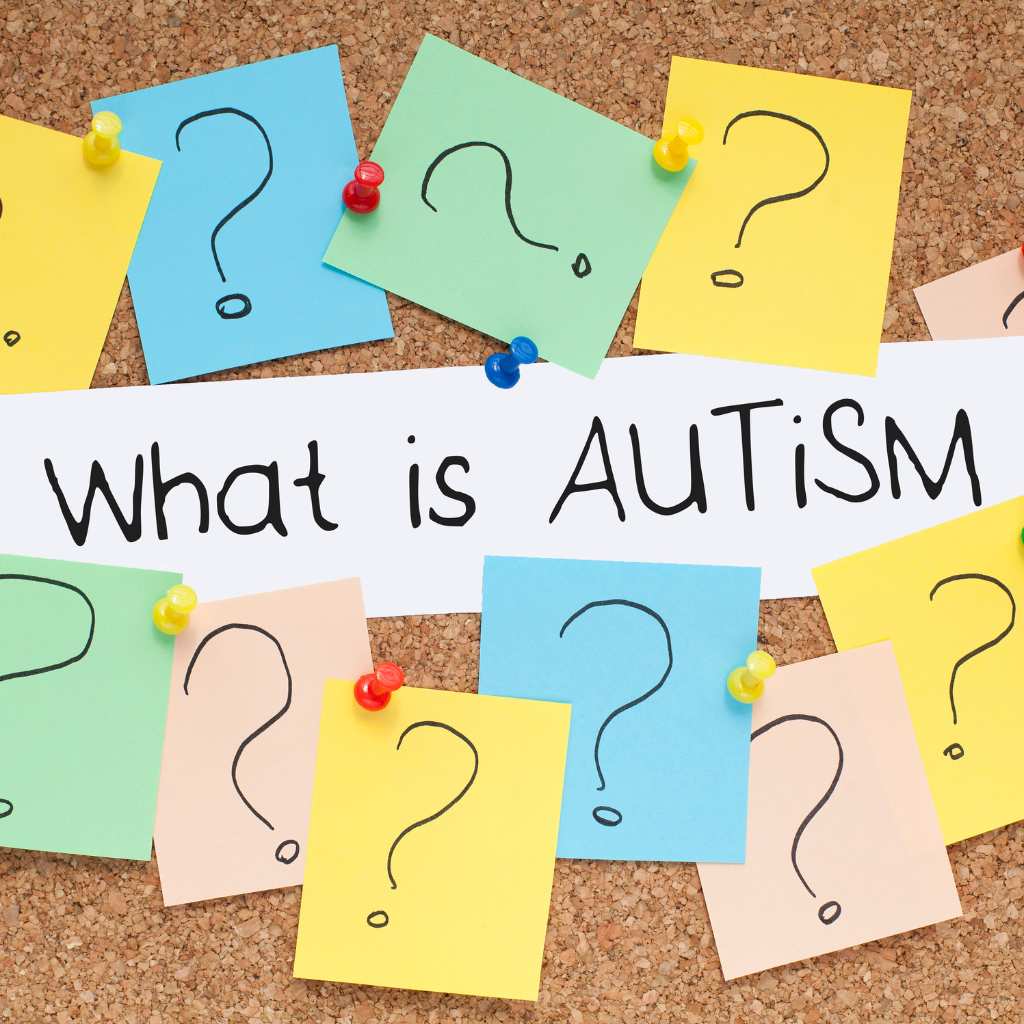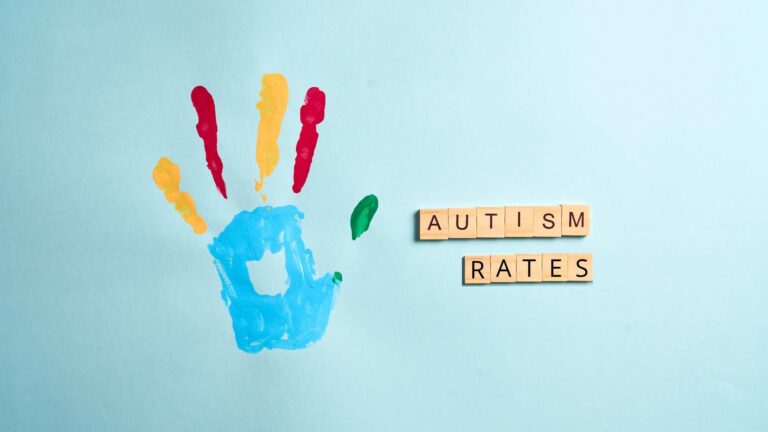Table of Contents
Why are autism rates rising?
In recent years, conversations around autism have grown louder—and for good reason. According to the latest data from the Centers for Disease Control and Prevention (CDC), autism rates have reached a new high, with 1 in 31 children in the United States identified with Autism Spectrum Disorder (ASD) by age 8. For many families, this increase raises pressing questions: Why are these numbers climbing? What does this mean for children, parents, and educators? And most importantly, what’s behind this rise?
Let’s take a closer look at what these autism rates mean, why they’re increasing, and how we can better understand and support individuals with autism without falling into myths or panic in this blog by ABA Centers of Florida.
Autism Rates: What the Latest CDC Data Shows

In April 2025, the CDC’s Autism and Developmental Disabilities Monitoring (ADDM) Network released new data showing that autism rates have risen to 32.2 per 1,000 children aged 8 years (1 in 31), up from 27.6 per 1,000 (1 in 36) in their previous report from 2020. This continuing upward trend demands our attention, but interpreting these numbers requires careful consideration.
The CDC’s monitoring network collected data across 16 diverse communities throughout the United States, examining health and educational records to identify children who meet the criteria for autism spectrum disorder. This comprehensive approach gives us our best picture of autism prevalence across different populations.
Several notable patterns emerged from the data:
- Boys continue to be diagnosed with autism at higher rates than girls—approximately 3.4 times higher (49.2 per 1,000 boys versus 14.3 per 1,000 girls).
- For the first time, Asian/Pacific Islander, Black, Hispanic, and multiracial children showed higher prevalence rates than white children.
- Early identification has improved significantly, with children born in 2018 showing 1.7 times higher rates of diagnosis by 48 months compared to children born in 2014.
- The prevalence varies dramatically by location, ranging from 9.7 per 1,000 children in Laredo, Texas, to 53.1 in California.
Why Are Autism Rates Rising? Understanding the Factors
The increase in autism rates doesn’t necessarily mean that more children are developing autism. Instead, several key factors help explain the rising numbers:
1. Better Recognition and Awareness
Perhaps the most significant factor behind increasing autism rates is that we’ve gotten much better at recognizing autism. Healthcare providers, educators, and parents are more familiar with the signs of autism than ever before. Heightened awareness allows health providers to identify children who may have been overlooked in past generations.
Public awareness campaigns, improved provider training, and media representation have all contributed to this change. Parents are more likely to recognize developmental differences early and seek evaluation, while pediatricians are more attuned to the early signs of autism during well-child visits.
2. Expanded Diagnostic Criteria
The definition of autism has evolved significantly over time. The diagnostic criteria have broadened to include a broader spectrum of presentations, bringing more children under the autism umbrella who might previously have received different diagnoses or no diagnosis at all.
In 2013, the Diagnostic and Statistical Manual of Mental Disorders (DSM-5) consolidated previously separate conditions (autistic disorder, Asperger’s syndrome, pervasive developmental disorder not otherwise specified) into a single diagnosis of autism spectrum disorder.
3. Improved Screening and Diagnostic Practices
Standardized screening for autism is now recommended for all children at 18 and 24 months of age, regardless of whether parents and caregivers have some concerns. These universal screening practices help identify children who might otherwise fly under the radar, particularly those with more subtle presentations.
The CDC report highlighted significant improvements in early identification. Children born in 2018 were 1.7 times more likely to receive an autism diagnosis by age four than children born in 2014. Earlier identification means more children are being counted in autism rates who might previously have been diagnosed later or missed entirely.
4. Better Access to Diagnostic Services
While significant disparities still exist, many communities have improved access to diagnostic services. We see this improvement in the changing demographic patterns of autism rates. The fact that autism prevalence is now higher among historically underserved racial and ethnic groups suggests that access to diagnostic services may be improving for these populations.
The CDC report noted that in 2022, Asian/Pacific Islander children had the highest prevalence (38.2 per 1,000), followed by American Indian/Alaska Native (37.5), Black (36.6), Hispanic (33.0), and multiracial children (31.9), with White children having the lowest prevalence (27.7). This new data reverses historical patterns where White children had the highest diagnosed prevalence, suggesting improvements in reaching underserved communities.
Is Autism an Epidemic?
Despite alarming headlines that sometimes frame rising autism rates as an “epidemic,” this characterization misrepresents what’s happening. The word “epidemic” implies a sudden outbreak of disease. Autism is not a disease but a neurodevelopmental condition, and the rising numbers primarily reflect our improved ability to recognize and diagnose it.
Autism has always been a part of humanity. From when the German psychiatrist Eugen Bleuler described the symptoms as cases of schizophrenia in 1911 to when Leo Kanner established autism as a neurodevelopmental disorder, not a psychiatric disorder, in 1943.
We didn’t have the understanding, terminology, or diagnostic tools to identify it correctly. Many adults today are receiving first-time autism diagnoses in their 30s, 40s, and beyond, having gone unrecognized throughout their childhood when awareness was lower.

That said, researchers continue to investigate whether certain environmental factors might influence autism risk. Current evidence suggests that autism primarily results from a complex interplay between genetic predisposition and prenatal environmental factors, with the most significant influence occurring before birth.
The Importance of Early Identification and Support
The increase highlights the critical importance of early identification and intervention. Research consistently shows that children who receive appropriate support early in life have better outcomes across various developmental domains.
The earlier a child is identified with autism, the sooner they can access services that support their development and help them build on their strengths.
What Rising Autism Rates Mean for Communities

The increasing prevalence of autism has essential implications for our communities, healthcare systems, and educational institutions. With approximately 1 in 31 children now identified with autism, the need for supportive services, trained professionals, and inclusive practices has never been greater.
Communities need to prepare for:
- Increased demand for diagnostic services and early intervention
- Greater need for autism-trained educators and therapists
- More inclusive educational settings that can accommodate diverse learning needs
- Long-term planning for support through adolescence and into adulthood
- Workplace inclusion initiatives that recognize and utilize the strengths of autistic individuals
At ABA Centers of Florida, We Walk With You
As autism rates continue to evolve, our focus should remain on improving identification, understanding, and support. The increase in autism prevalence represents progress in many ways. For example, we’re identifying more children who need support, recognizing autism across more diverse populations, and diagnosing children earlier when intervention can be most effective.
At ABA Centers of Florida, we believe that meaningful progress starts with comprehensive support—not just for the individual with autism but for the entire family.
Our team is committed to ABA science-backed interventions, ongoing research, and compassionate care that leads to real results. Whether your child is just receiving a diagnosis or already navigating life with autism, we provide personalized ABA plans that meet their unique needs and support individuals to reach their full potential.
If you want to know more about our autism care services, please call us at (772) 773-1975 or schedule a free consultation with our team. We cover Doral, Miramar, Jensen Beach, Tampa, Orlando, Boca Raton, Melbourne, Davenport, Kissimmee, Bradenton, and many more areas of the Sunshine State.
We’re here to help build skills, independence, and a brighter future!








